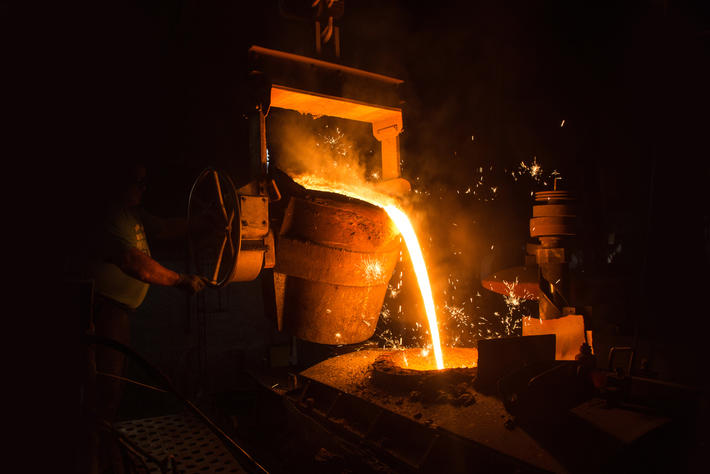
After a stable 2023, new uncertainties for Italian foundries in 2024
Italian foundries have closed 2023 with a substantial stability compared to the previous year. The volumes produced have shown a slight decline, while the turnover has seen a more marked decrease, mainly due to the reduction in the prices of energy raw materials compared to the peaks of 2022.
Going into the details of the reports prepared by the Assofond Study Center, however, a more complex picture emerges, which not only highlights important differences between the two macro-sectors into which the sector is differentiated - that of ferrous metal foundries and that of non-ferrous metal foundries - but also between the trend of the first part of the year just ended compared to that of the last few months.
The performance of Italian foundries between 2023 and 2024
2023 began on the wave of still sustained demand, which in the previous twelve months had brought good levels of use of production capacity and visibility of orders. Starting from the second quarter, however, we witnessed a progressive reduction in the economic push, which gradually caused the trend curve to slide downwards. A dynamic that was also confirmed in the first part of 2024, mainly due to the difficult situation of ferrous metal foundries, which are currently suffering more than non-ferrous ones.
But what are the prospects for the coming months? Broadening the gaze to customer sectors, the results of the latest Federmeccanica economic survey show "many shadows and few, feeble, lights": 33% of the companies interviewed report a worsening order portfolio, and what is particularly significant here, over half of the responding companies (54%) do not foresee, compared to the past, new investment activities in the next 6-12 months, while 12% are even thinking of reducing them. The very issue of stimulating investments, including those linked to the ecological transition path, today represents the crucial point around which the future of our manufacturing is played out. Too often, in Italy, the schizophrenia of the legislator, regardless of political color, has made it practically impossible to plan future commitments with the reasonable certainty of being able to have a stable reference framework. Just think of the now infamous building super bonus, for which there are countless changes, corrections, and reversals: dynamics that have changed the size of the incentive and the methods of application from one moment to the next, throwing into panic both those who had decided to take advantage of the bonus and the companies that now find themselves with millions of practically unsellable tax credits in their bellies. Similar uncertainties have materialized on the Transition 5.0 plan, which initially seemed to exclude precisely the industrial sectors most in need of support, a decision that was fortunately later corrected.
In short, today more than ever, also in consideration of the ever-unstable international geopolitical framework, it is necessary to restore strength to national and European manufacturing, through a series of actions and measures capable of promoting the green transition while preserving its competitiveness. This is why Assofond is among the thousand and more organizations that have signed the “Antwerp Declaration for a European Industrial Agreement”: an urgent appeal addressed to European decision-makers to revitalize the continental industrial landscape through a series of key actions. Among these, the need to address the problem of energy prices, which remain high, establish a common European infrastructure, guarantee safe and stable supplies of raw materials, promote innovation, stimulate demand for sustainable products, streamline legislation, simplify the regulatory framework on State aid and relaunch the European single market.
Source: In Fonderia – ll magazine dell’industria fusoria italiana


